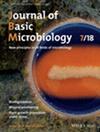The Biological Characteristics of Nematophagous Fungus Esteya vermicola Fxy121 Strain and Its Specific Detection
Abstract
Esteya vermicola Fxy121 strain, isolated from live pine trees, exhibited high adhesion and infection activity against Bursaphelenchus xylophilus. In this study, we studied the biological characteristics of Esteya vermicola Fxy121, and screened species-specific primers used for its colonization detection on pine trees. The liquid fermentation formula with higher blastospore production was obtained by adjusting the ratio of carbon and nitrogen and adding mineral salts, blastospore concentration was 5.5 × 108 spores mL−1 cultured for 6 days using new formula. The germination of blastospores was not affected when suspension was placed at 4°C–30°C for 1–8 h. The number of lunate spores increased first and then decreased with the increase of initial blastospore concentration of E. vermicola Fxy121, medium concentration of blastospores suspension showed higher infectivity. The evF/evR primer pair successfully amplified the except fragment size of 522 bp from isolates of E. vermicola and from pine needles sprayed with blastospores suspension of E. vermicola. This study suggests that blastospores concentration of E. vermicola Fxy121 significantly affect the production of lunate spores and infectivity against B. xylophilus. The species-specific primers allowed fast and reliable detection of E. vermicola directly from tissues of pine trees sprayed and injected with spore suspension.

 求助内容:
求助内容: 应助结果提醒方式:
应助结果提醒方式:


